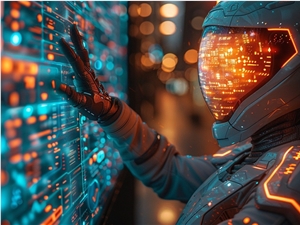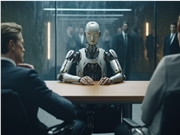Recently, the world's first "humanoid robot" Protoclone has garnered widespread attention on social media. This robot not only features an exquisite design but also possesses a structure resembling muscles and bones, which is quite astonishing. In a captivating video, Protoclone hangs quietly from a harness, and over time, it gradually begins to twitch and move, eventually activating its limbs and displaying an incredibly human-like posture.
Protoclone is developed by the tech startup Clone Robotics, which claims that Protoclone is the world's first "muscle-skeletal android robot." In the video, the robot's legs and arms continuously twitch, with synthetic muscles contracting beneath its translucent skin, seemingly demonstrating real physiological responses. This astonishing sight not only evokes discomfort but also sparks limitless imagination about future technologies.

The company's goal is to create "synthetics" that are nearly indistinguishable from real humans. Protoclone's body structure consists of over 1,000 synthetic muscles and 500 sensors, providing 200 degrees of freedom of movement, which means it can perform up to 200 independent movements. Although Protoclone is referred to as "faceless," its design remains extremely "anatomically correct."
The development team of this robot has also compared it with other robot manufacturers, emphasizing its technological uniqueness. Clone Robotics even challenges Tesla's robots, claiming that their product has advantages in multiple aspects, particularly in muscle strength and cost. Furthermore, Clone Robotics has stated that they will launch more stunning products in 2025.
Official website: https://www.clonerobotics.com/
Key Points:
🌟 Protoclone is the world's first humanoid robot with a "muscle and skeletal" structure, exhibiting extremely human-like movement.
🤖 The robot consists of over 1,000 synthetic muscles and 500 sensors, featuring 200 degrees of freedom of movement.
🚀 Clone Robotics plans to release more innovative products in 2025, aiming to create "synthetics" that are indistinguishable from humans.










